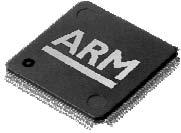ARM and Cadence Tape Out First 14nm FinFET Test Chip
AMD and Cadence taped out the first ARM Cortex-A7 test chip in Samsung's 14-nanometer FinFET process.
According to ARM, the chip included the Cortex-A7 processor itself, as well as Artisan standard-cell libraries, "next-generation" memories, and general purpose IOs.
"This is an important milestone in our efforts to enable our silicon partners for continued low-power leadership in future generations of innovative, energy-efficient mobile products, said Dipesh Patel, vice president and general manager of the Physical IP Division at ARM. "Taping out ARMs most energy-efficient applications processor on Samsung's advanced low-power manufacturing process was achieved through the combination of leading-edge technology and R&D excellence, as well as a deep and early collaboration with Samsung and Cadence."
ARM said that the process is targeting high-density, high-performance and ultra-low power SoCs for "future smartphones, tablets and all other advanced mobile devices". There was no information when 14 nm ARM processors will become available.
Contact Us for News Tips, Corrections and Feedback
Get Tom's Hardware's best news and in-depth reviews, straight to your inbox.

Wolfgang Gruener is an experienced professional in digital strategy and content, specializing in web strategy, content architecture, user experience, and applying AI in content operations within the insurtech industry. His previous roles include Director, Digital Strategy and Content Experience at American Eagle, Managing Editor at TG Daily, and contributing to publications like Tom's Guide and Tom's Hardware.
-
CaedenV A Bad DayNot much quality content from the comment sections huh?...seems more like an issue with the content providers to meReply -
dozerman Ha. Eat that, apple. Leaving samsung for your chips doesn't seem like such a good idea after all, now does it?!?Reply -
alextheblue zzz_bI would like to know the estimated power used for on ARM15 with this technology!Uh, from X to Y? You know there's no single "ARM15 chip", and the various ARM15-equipped (and derivatives thereof) SoCs span a range of performance, power, and thermal targets. This process node will be no different.Reply
